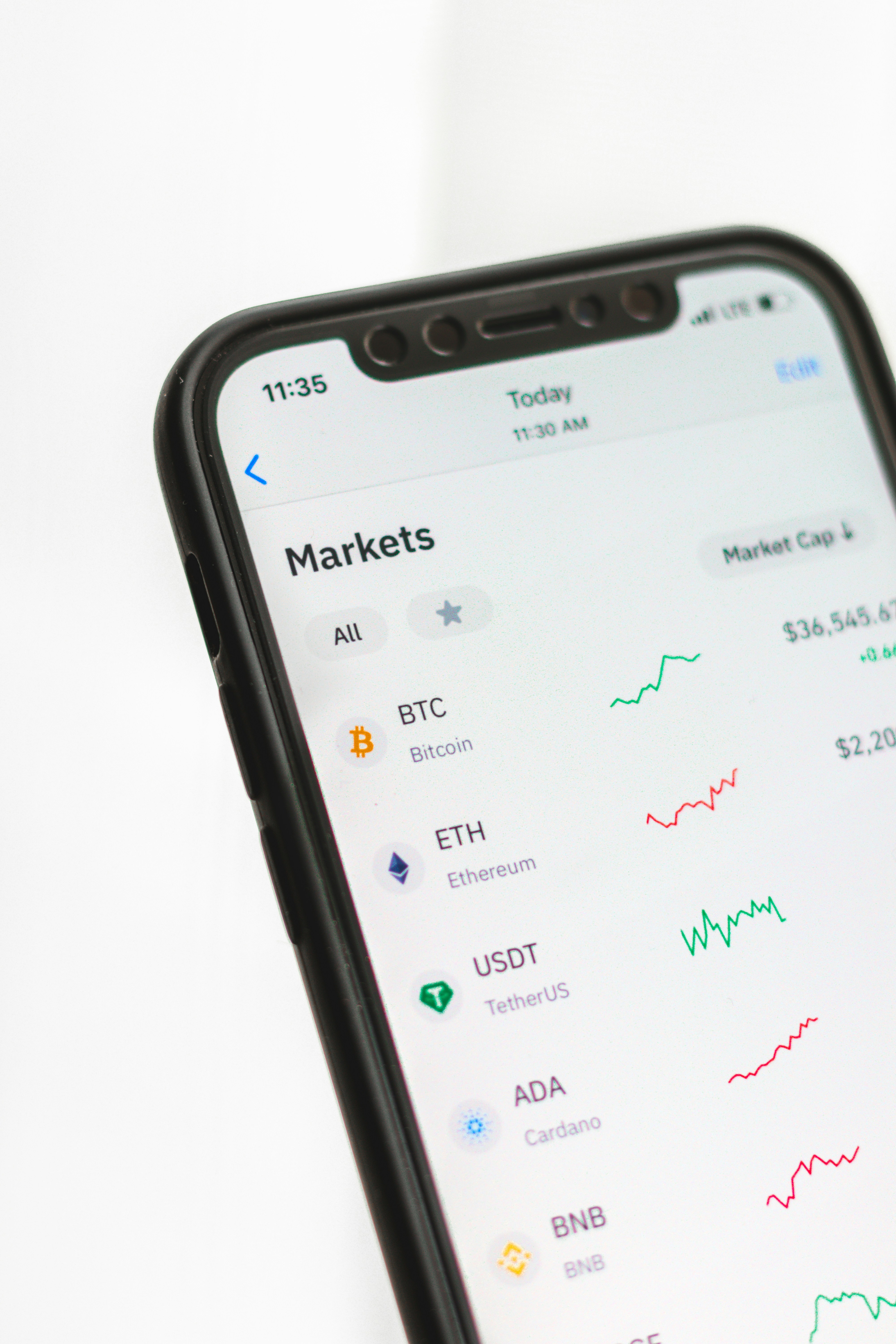In the midst of growing turmoil in the Middle East, the crypto market has taken a hit, causing over $100 million in liquidation losses for traders. The recent Coinglass data reveals the extent of these losses, highlighting the intensified market rout. As digital assets continue to fluctuate, traders are left grappling with the impact of this ongoing volatility. Find out more about the challenges faced by crypto traders in the wake of this market downturn.
Background on Crypto Market Rout
The crypto market rout refers to a period of significant decline and volatility in the cryptocurrency market. This downturn has been characterized by a sharp drop in the value of various cryptocurrencies, resulting in substantial losses for many traders and investors. The market rout has been influenced by several factors, including the ongoing turmoil in the Middle East and geopolitical events that have created uncertainty and instability in global financial markets.
Impact of Middle East Turmoil on Crypto Market
The Middle East turmoil has had a significant impact on the crypto market. The region has been plagued by political instability, armed conflicts, and economic uncertainty, which have all contributed to the market’s downward spiral. These factors have heightened investor anxiety and led to increased selling pressure in the crypto market. Additionally, concerns over the potential impact of the Middle East turmoil on global economic stability have further intensified the downward pressure on cryptocurrency prices.
Magnitude of Losses Suffered by Crypto Traders
The losses suffered by crypto traders during the market rout have been substantial. According to data from Coinglass, liquidation losses alone exceeded $100 million on a single day during the height of the market downturn. These losses represent a significant portion of traders’ investments and have had a devastating impact on their portfolios. Many traders have seen their gains from earlier periods completely wiped out, leading to financial hardships and emotional distress.
Causes of Liquidation Losses
There are several key causes behind the liquidation losses experienced by crypto traders during the market rout.
High Market Volatility
One of the primary causes of liquidation losses is the high volatility of the crypto market. Cryptocurrencies are known for their price fluctuations, with values often experiencing rapid and significant swings. This volatility can lead to unexpected price drops, triggering margin calls and liquidations for traders who have taken on leverage or borrowed funds to amplify their trades.
Margin Trading and Leverage
Margin trading and leverage have been contributing factors to liquidation losses in the crypto market. Margin trading allows traders to borrow funds to amplify their trading positions, potentially increasing their profits. However, it also exposes them to higher risk, as any losses incurred are magnified. When the market turns against them, traders who have used leverage can quickly find themselves facing margin calls and subsequent liquidation of their positions.
Lack of Risk Management
Another cause of liquidation losses is the lack of proper risk management strategies by traders. Many individuals enter the crypto market without a clear understanding of the risks involved or a plan for managing those risks. This lack of risk management can lead to excessive exposure to volatile assets, overleveraging, and failure to set appropriate stop-loss orders. Without proper risk management measures in place, traders are more susceptible to significant losses during market downturns.
Liquidation Mechanism in Crypto Trading
To better understand the impact of liquidation losses in the crypto market, it is important to understand how liquidation works in this context.
Definition and Purpose of Liquidation
Liquidation refers to the process of closing out a trader’s positions when they no longer meet the margin requirements set by the exchange or platform. This process is triggered when the trader’s account equity falls below a certain threshold, often referred to as the maintenance margin. The purpose of liquidation is to protect the lender or exchange from potential losses and ensure that borrowed funds are repaid.
How Liquidation Works in Crypto Trading
When a trader’s account equity falls below the maintenance margin, the exchange or platform will initiate the liquidation process. This typically involves selling off the trader’s assets at the prevailing market price to repay the borrowed funds. The proceeds from the liquidation are used to cover the trader’s outstanding debt, fees, and any other obligations. The remaining amount, if any, is returned to the trader. However, it is important to note that liquidation can result in significant losses for the trader, especially during periods of high market volatility or when leverage is involved.
Losses Incurred by Crypto Traders
The losses incurred by crypto traders during liquidations can be substantial and have far-reaching consequences.
Magnitude of Losses in Liquidations
During the recent market rout, losses incurred in liquidations exceeded $100 million on a single day. These losses represent a significant portion of traders’ invested capital and can lead to significant financial hardships for individuals who have relied on their crypto holdings for income or as a source of wealth accumulation.
Types of Cryptocurrencies Most Affected
The liquidation losses have not been limited to a single cryptocurrency but have affected a wide range of digital assets. However, the most significant losses have been observed in highly volatile and speculative cryptocurrencies that are often traded with leverage. These include coins such as Bitcoin, Ethereum, and other altcoins that have experienced significant price swings during the market downturn.
Impact of Liquidations on Trader Confidence
The losses incurred through liquidations have had a detrimental effect on trader confidence in the crypto market. Many individuals who have suffered substantial losses may become hesitant to continue trading or investing in cryptocurrencies. This loss of confidence can lead to reduced trading volumes, increased selling pressure, and further price declines. It may take significant time and positive market developments to restore trader confidence and stabilize the market.
Market Reactions to the Losses
The losses incurred by crypto traders have had several notable effects on the overall market dynamics.
Price Volatility of Cryptocurrencies
The market rout and subsequent liquidations have contributed to increased price volatility in the cryptocurrency market. The sharp declines in prices, coupled with the uncertainty surrounding the market, have led to heightened fluctuations in cryptocurrency values. This volatility creates challenges for traders and investors who are attempting to navigate the market and make informed decisions.
Effect on Overall Market Sentiment
The losses suffered by crypto traders have had a negative impact on the overall market sentiment. Investor confidence has been shaken, and there is increased caution and uncertainty surrounding the future performance of cryptocurrencies. This negative sentiment can create a self-sustaining cycle of selling pressure and further price declines, as traders and investors rush to liquidate their assets to mitigate potential losses.
Withdrawal of Institutional Investors
The market rout and the associated losses have also led to the withdrawal of institutional investors from the crypto market. Institutions, such as hedge funds and asset management firms, tend to be more risk-averse and have stricter risk management protocols in place. The significant losses observed during the market downturn have prompted many of these institutions to reassess their exposure to cryptocurrencies and potentially reduce or exit their positions altogether. The withdrawal of institutional investors can have a profound impact on market liquidity and investor sentiment.
Lessons Learned for Crypto Traders
The market downturn and the subsequent losses have highlighted several important lessons for crypto traders to consider going forward.
Importance of Risk Management Strategies
The importance of risk management strategies cannot be overstated in the crypto market. Traders must have a clear understanding of the risks involved in their trades and implement appropriate risk mitigation measures. This includes diversifying their holdings, setting realistic profit and loss targets, and utilizing stop-loss orders to limit potential losses.
Avoiding Overexposure to Margin Trading
Margin trading can amplify both profits and losses in the crypto market. Traders should exercise caution when engaging in margin trading and avoid overexposing themselves to leverage. It is crucial to thoroughly understand the risks associated with leverage and maintain sufficient account equity to avoid triggering liquidation events.
Diversification of Crypto Holdings
Diversifying one’s crypto holdings can help mitigate the impact of losses during market downturns. By spreading investments across multiple cryptocurrencies with different risk profiles, traders can reduce their exposure to individual asset price movements. This diversification strategy can provide a level of protection against excessive losses in any one particular cryptocurrency.

Regulatory Implications
The recent market rout and the losses incurred by crypto traders have sparked calls for increased regulation in the crypto trading space.
Calls for Increased Regulation in Crypto Trading
The unprecedented losses and the potential risks associated with the crypto market have raised concerns among regulators and policymakers. Calls for increased regulation aim to provide greater oversight and protection for traders and investors. This may involve stricter regulations on leverage, enhanced transparency requirements, and measures to prevent market manipulation or fraudulent activities.
Possible Impact on Market Stability
The introduction of increased regulation in crypto trading may have implications for market stability. While regulation can help protect market participants, excessive or overly burdensome regulations could stifle innovation and hinder market growth. Striking the right balance between regulation and fostering a supportive environment for cryptocurrency trading will be crucial to ensure long-term market stability and growth.
Strategies for Minimizing Liquidation Losses
To minimize the impact of liquidation losses, crypto traders can employ several strategies.
Setting Proper Stop-Loss Orders
Setting proper stop-loss orders is essential for risk management in crypto trading. Traders should determine their risk tolerance and set stop-loss orders at appropriate levels to exit trades if prices move against them. This can help limit potential losses and avoid triggering liquidation events.
Using Hedging Techniques
Hedging techniques can be employed to offset potential losses in the crypto market. Traders can utilize derivatives such as futures contracts or options to hedge their positions, taking opposite positions to their existing trades to mitigate potential losses. This hedging strategy can help reduce the impact of adverse market movements and provide a level of protection against liquidation losses.
Staying Informed About Market Trends
Staying informed about market trends and developments is crucial for crypto traders. By actively monitoring news, market analysis, and expert opinions, traders can gain insights into potential market movements and make more informed trading decisions. This market awareness can help traders anticipate and react to changing market conditions and mitigate potential losses.

Long-Term Outlook for the Crypto Market
While the recent market rout has caused significant losses and turmoil, the long-term outlook for the crypto market remains promising.
Recovery Prospects After the Market Rout
Historically, the crypto market has demonstrated resilience and the ability to recover from downturns. After previous market corrections, cryptocurrencies have experienced periods of significant growth and value appreciation. It is likely that the market will eventually recover from the current rout, albeit with some bumps along the way.
Potential Opportunities for Value Investors
For value investors, the market rout presents potential opportunities to invest in cryptocurrencies at lower prices. When prices are depressed, there may be opportunities to accumulate assets with long-term growth potential. By conducting thorough research and analysis, value investors can identify undervalued cryptocurrencies and position themselves for potential future gains.
Role of Geopolitical Events in Crypto Market Movements
Geopolitical events, such as the Middle East turmoil, have a significant impact on the crypto market. It is essential for traders to recognize and understand the interplay between geopolitical events and market movements. By staying informed about global developments and geopolitical risks, traders can better anticipate potential market shifts and adjust their trading strategies accordingly.
Conclusion
The recent crypto market rout and the losses incurred by traders serve as a reminder of the inherent risks and volatility associated with cryptocurrency trading. It is crucial for traders to approach the market with caution, implement proper risk management strategies, and stay informed about market trends and developments. By maintaining a balanced approach to crypto trading and learning from market downturns, traders can navigate the crypto market more effectively and increase their chances of long-term success.




